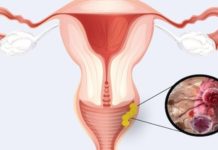The causes of a coma in the throat can be very diverse, from psychosomatics to the oncological process in the body. Patients complain of difficulties when trying to take a breath and discomfort in the throat, intensifying during head movements. Something seems to be stuck in the throat. There is an obsessive desire to cough up a phantom object stuck in the trachea, often patients stop eating, because they are afraid of eating that completely block the lumen of the throat. Symptoms develop gradually, gradually aggravating the patient’s condition, or an attack of severe discomfort, sometimes asphyxiation, sharply arises. The methods of treatment directly depend on the factor that caused the symptoms, this may be taking medication, physiotherapeutic procedures or surgery.
Material Content:
Lump in the throat: what could it be?
A lump in the throat does not appear by chance, it indicates a malfunction in the functioning of any organs or systems. To determine exactly why an unpleasant symptom occurred, you need to undergo a comprehensive examination of the body, since many different pathologies can lead to a feeling of suffocation.

Most often, a sensation of a lump in the throat occurs due to damage to organs located in the neck or near it:
- cervical vertebrae;
- esophagus;
- larynx;
- trachea;
- thyroid gland.
In addition, similar symptoms are provoked by dysfunction of the nervous system, which manifests itself in a panic attack with an attack of suffocation.
Infectious diseases
Colds and infectious diseases are often accompanied by a feeling of constriction in the throat, which is associated with a local inflammatory process. In a normal situation, such a symptom does not threaten complications because it goes away with the patient’s recovery, but in some cases you need to be careful and monitor the development of the disease:
- throat diseases, accompanied by a sensation of a lump, at a young age.
The structures of the child and adult body have significant differences, so the danger of some diseases increases significantly. The structure of the throat in children is more loose, so a commonplace ARI can provoke swelling and suffocation.
- diphtheria lesion of the larynx and pharynx.
With this disease, a specific coating in the form of white films is deposited in the throat. In severe cases, there is a lot of it, the airways overlap, and asphyxiation occurs, that is, a state of suffocation. At earlier stages, there may be a sensation of a lump in the throat.

Problems and discomfort during breathing are a formidable symptom of an infectious disease that occurs in the later stages.
It is usually preceded by early diagnostic signs:
- significant rise in temperature;
- general deterioration in well-being;
- pallor of the skin, sometimes the skin may look somewhat gray;
- swelling in the neck;
- very fast fatigue of the patient, weakness;
- the feeling that something is preventing the ingestion of food, water and even saliva;
- lymphadenopathy - an increase in volume and soreness with light pressure on the lymph nodes located near the neck.
Since the above symptoms are characteristic not only for diphtheria, but also for a number of other diseases, it does not allow an accurate diagnosis.
Other manifestations that are inherent in diphtheria damage will help to suspect infection and localization of the focus of the pathology:
- sore throat - the patient complains of hoarseness and coughing, which is very tiring. During inspiration, a specific whistle arises that can be heard even from a distance. This sound is formed due to the passage of air through the narrowed throat;
- damage to the pharynx - tonsils give in to inflammation, they significantly increase in size, and their surface is covered with diphtheria films. They are almost impossible to remove, since they grow densely into the mucous membrane, after detachment, droplets of blood appear in their place. In advanced cases, plaque spreads beyond the tonsils, covering the walls of the pharynx and the sky.
Thyroid dysfunction
The thyroid gland is the structure of the endocrine system, which is located on the front surface of the neck and fits snugly to the airways and esophagus. If, for any pathology, the organ begins to grow, then the surrounding tissues are automatically squeezed. As a result, patients complain of a lump in their throat.
It is interesting: TTG norm in women
The thyroid gland may increase in size asymptomatic - endemic goiter. In such cases, there is only a sensation of a foreign body in the neck and visible proliferation of tissues.
Also, hypertrophy of the gland is one of the symptoms of hyperthyroidism, which is accompanied by other signs:
- increased sweating;
- increased irritability, nervousness;
- heart palpitations;
- inability to long work, fatigue;
- tremor (twitching) of the chin, and sometimes limbs;
- swelling in different parts of the body.
The thyroid gland is an important organ that affects many processes in the body, so it is important not to ignore the lump in the throat, but to consult a doctor and cure the disease.
Oncological disease
Sensations of compression can be a sign of the development of neoplasms that are localized in the larynx or in adjacent tissues and organs. A benign process does not manifest itself in changes in the body, unlike oncology, which provokes a deterioration in the patient's condition. Symptoms such as fatigue, the presence of a tumor, and lymphadenopathy testify to cancer formation.
The exact causes of the pathology are unknown, but a number of factors that can provoke its development are highlighted:
- frequent injuries;
- smoking abuse;
- the constant influence of negative factors, such as smoke or dust, on the inner wall of the larynx;
- excessive burden on the throat - prolonged cough, scream.
Often patients talk about the appearance of an odor from the mouth, resembling rot, hoarseness of the voice and the release of sputum with blood.
Osteochondrosis
With osteochondrosis, the vertebrae are displaced and crush the nerve fibers passing nearby. As a result, there is a feeling of a lump in the throat, backache, headaches. Discomfort is more pronounced on the part of the sick nerve, and the symptoms are worse at night due to the patient’s lying position.

Also, the clinical picture of cervical osteochondrosis is characterized by such manifestations as:
- dizziness;
- coordination problems;
- soreness in different parts of the body;
- sleep dysfunction;
- mood swings for no apparent reason;
- depressed state.
The patient is afraid of suffocation, so he is constantly in a state of stress. In order to prevent overstrain of the nervous system, the occurrence of panic attacks, you need to get rid of the signs of the disease in time.
Gastrointestinal problems
The most common gastrointestinal problem is gastritis, that is, inflammation of the stomach. The disease is accompanied by a feeling of a foreign body in the esophagus, which occurs mainly after eating, sometimes can appear in the middle of the night or during long breaks in food. Discomfort occurs due to the ingestion of gastric contents on the walls of the esophagus and larynx (reflux) and irritation of the inner shell.

For pathology, the following clinical manifestations are characteristic:
- pain in the stomach;
- the appearance of heartburn;
- sour breath, bad taste;
- frequent burping;
- the tongue is covered with a white coating;
- stool disorders.
Symptoms intensify after eating harmful foods - oily, fried, spicy. With frequent reflux of hydrochloric acid from the stomach into the upper sections of the digestive tract for a long time, chronic inflammation of the mucous membrane of the esophagus and larynx develops.
Allergic reactions
There are two types of allergic reactions that cause a sensation of a lump in the larynx - Quincke's edema, localized in the head and neck, and anaphylactic shock. At first, when the mucous ball just began to swell, the patient speaks only of discomfort and difficult breathing. But as puffiness increases, it becomes more difficult for him to take a breath, soreness joins. In the end, the walls of the larynx join, its lumen closes, there is a complete inability to inhale, asphyxiation.

This condition requires emergency care, which consists in the administration of adrenaline, antihistamines (diphenhydramine, diazolin) and glucocorticosteroids (hydrocortisone). In some cases, a conicotomy is performed - an incision in the neck that allows breathing with the larynx closed.
Psychosomatic factor in the manifestation of a lump in the throat
Psychosomatics is a common cause of a lump in the throat. The degree of manifestation ranges from a feeling of slight discomfort to spasm of the larynx, which does not allow you to take a breath.

A symptom may indicate the presence of such pathologies of the nervous system as:
- neurasthenia;
- depression;
- panic attack;
- hyperventilation syndrome.
Psychogenic asphyxiation develops due to overwork of the nervous system due to chronic fatigue, lack of sleep, stress.To avoid unpleasant and dangerous symptoms, you can take sedative medicines, and in difficult situations - antidepressants.
Lump in the throat: treatment

In order to prescribe the right treatment and say goodbye to a lump in the throat, you need to know the reason precisely, since the method of therapy directly depends on it:
- tumor - surgical removal, chemotherapy, radiation treatment methods;
- gastritis - a specific diet, the use of decoctions of flax, oatmeal;
- allergy - antihistamines and corticosteroids;
- osteochondrosis - professional therapeutic massage, chondroprotectors;
- infection - the use of antibiotics, anti-diphtheria serum, general strengthening agents;
- thyroid disease - stabilization of the function of the gland, surgery to remove part of the organ.
Before starting treatment, you need to undergo a thorough examination, since incorrect therapy will lead to a loss of time. Which in some situations can cost the patient's life, since a lump in the throat can lead to suffocation, for example, during allergic reactions or acute infections, especially in children.
How to avoid a lump in the throat?
To avoid the appearance of a coma in the throat, you need to monitor your health and periodically undergo preventive medical examinations, as well as:
- treat thyroid disease;
- avoid hypothermia;
- Do not overexert the vocal cords;
- eat right to avoid the development of gastritis;
- use caution with new foods that may cause allergies;
- vaccinated according to the calendar to protect against diphtheria;
- avoid stressful situations.












